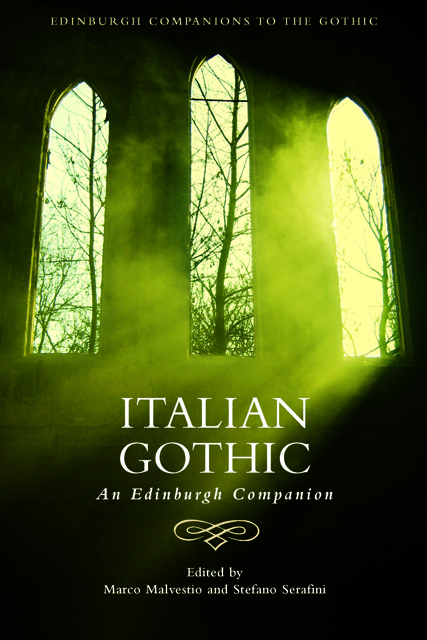3 - Early Developments: 1861–1914
Published online by Cambridge University Press: 20 October 2023
Summary
In the period between 1861 and 1914, two major interlinked traumas caused the fracture that led to the proliferation and multiplication of Gothic discourses. The first, of a historical and political nature, was national unification, which initiated a long and controversial process of state-building that eventually revealed the fragmented character of a country in which extremely diverse regions had been forcibly integrated into a single political entity. Rapid and invasive processes of industrialisation and urbanisation dramatically changed the texture of cities, particularly the largest ones, such as Milan, Florence and Naples; they also exacerbated social and economic disparities, caused a sharp increase in crime and generated strong concerns among Italians. The Gothic, as I will show, arises as an acknowledgement of such disquiet. The second trauma, of a social and historical nature, was the result of significant advancements in the fields of science, medicine and technology, which paradoxically aided or mirrored the resurgence of occult beliefs and practices.
In fact, far from being a monolithic discourse founded on purely rational and empirical thinking or a coherent set of methods and approaches, what scholars refer to as science at the fin de siècle was, rather, an extremely diverse series of stances, knowledges and practices (mesmerism, spiritualism and psychical research) that blurred the binary distinctions between natural and supernatural. Although many questioned the scientific status of occult practices, ‘there was no unequivocal position’, as Martin Willis remarks, ‘from which these beliefs could be denied a place within the scientific hierarchy’ (11). Both telegraphy and spiritualism, as Richard Noakes points out, permitted invisible communication from a distance (422). While inventions such as laryngoscopes and stomach illuminations allowed physicians to explore the inside of the living body, clairvoyants claimed to be capable of identifying dis-eases through their gaze. Photography broadened the realm of the visible and proved to be an instrumental tool in distributing scientific knowledge, such as bacteriology, but it also became a crucial resource for spiritualists, who saw it as proof of psychic phenomenology.
- Type
- Chapter
- Information
- Italian GothicAn Edinburgh Companion, pp. 48 - 62Publisher: Edinburgh University PressPrint publication year: 2023



